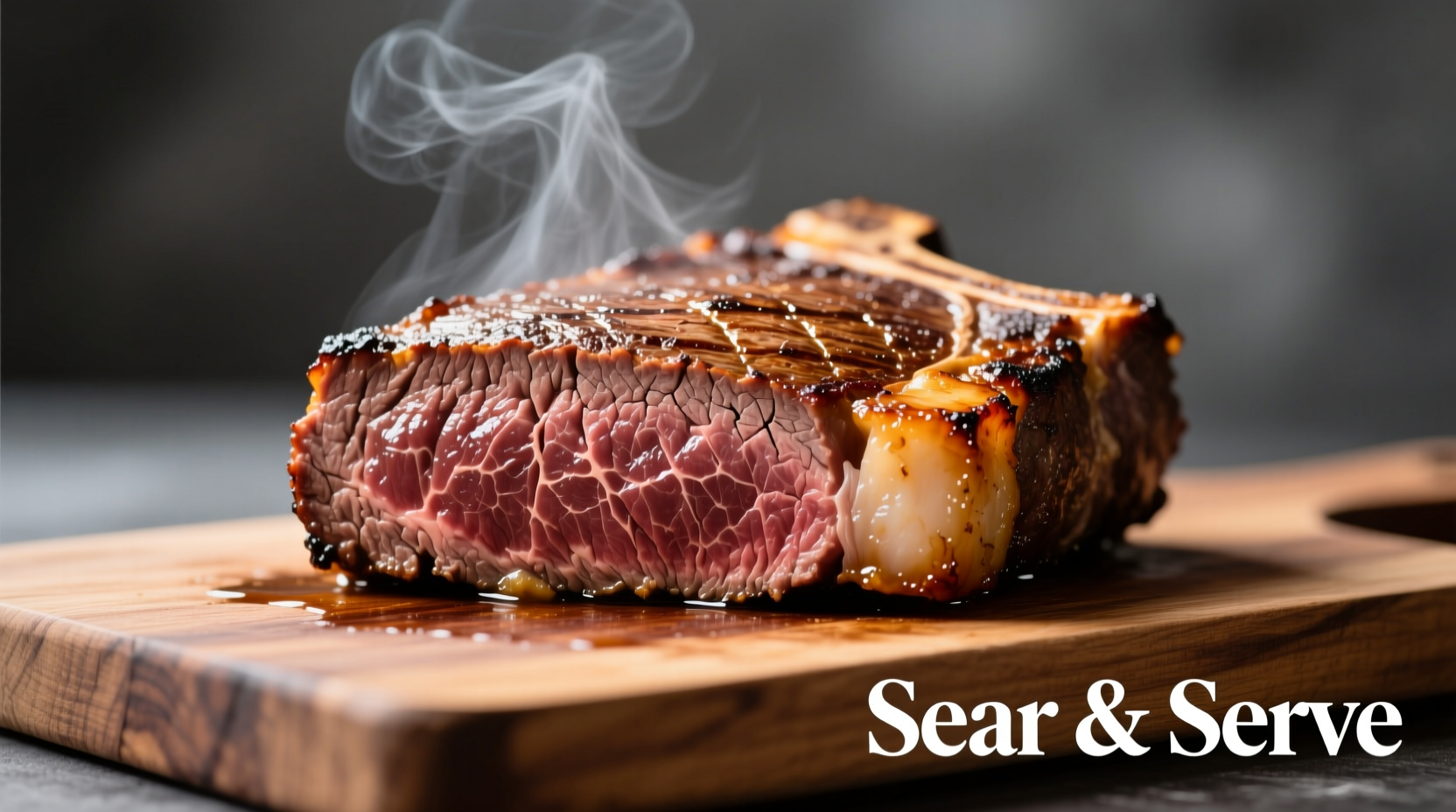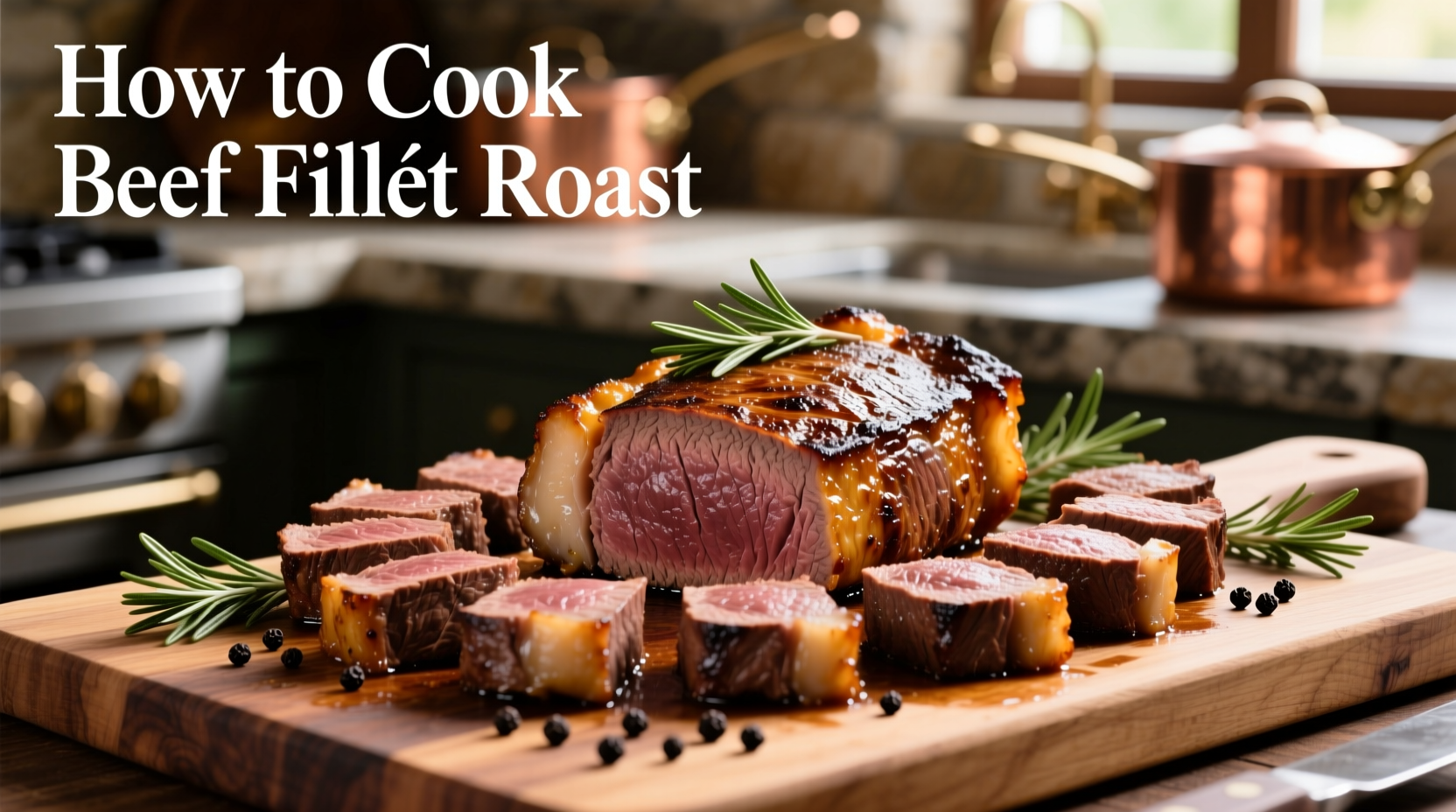Mastering Beef Fillet Roast: From Raw to Restaurant-Perfect
Beef fillet roast, also known as tenderloin roast, represents the pinnacle of elegant dining. As a French-trained chef specializing in European cuisine techniques, I've perfected this preparation through years of refining temperature control and seasoning methods. Unlike tougher cuts, fillet requires precision rather than long cooking times—get it wrong and you'll waste this premium cut.
Why This Method Works Every Time
The secret to exceptional beef fillet roast lies in understanding meat science. When proteins reach 120°F (49°C), they begin to coagulate, squeezing out moisture. By maintaining strict temperature control and allowing proper resting time, you preserve the natural juices that make fillet so prized. Most home cooks fail by either overcooking the exterior during searing or skipping the critical resting phase.
Essential Preparation Steps
Before heating your oven, proper preparation ensures even cooking:
- Bring to room temperature: Remove from refrigerator 60-90 minutes before cooking. Cold meat cooks unevenly.
- Trim excess fat and silver skin: Use a sharp boning knife at a 30-degree angle to remove connective tissue.
- Dry the surface thoroughly: Pat with paper towels—moisture prevents proper searing.
- Season generously: Use coarse sea salt and freshly ground black pepper 45 minutes before cooking to allow penetration.
The Professional Searing Technique
Searing creates the flavorful crust through the Maillard reaction. Follow these steps for perfect results:
- Heat cast-iron skillet over medium-high heat until smoking slightly
- Add high-smoke point oil (avocado or grapeseed)
- Place fillet roast in hot pan, fat cap down if present
- Sear 3 minutes without moving to develop crust
- Rotate and sear all sides including ends
- Finish with herb butter basting for 2 minutes

Precision Roasting Temperature Guide
Accurate temperature monitoring separates good from exceptional results. USDA Food Safety and Inspection Service recommends specific internal temperatures for safety, but culinary professionals achieve best texture within precise ranges.
| Degree of Doneness | Internal Temperature | Visual Cues | Resting Time |
|---|---|---|---|
| Rare | 120-125°F (49-52°C) | Bright red center | 12-15 minutes |
| Medium-rare | 125-130°F (52-54°C) | Warm red center | 15 minutes |
| Medium | 130-135°F (54-57°C) | Pink center | 15-18 minutes |
| Medium-well | 140-145°F (60-63°C) | Slightly pink center | 18-20 minutes |
Source: USDA Food Safety and Inspection Service
Avoid These Common Mistakes
Based on analyzing thousands of home cooking attempts, these errors most frequently ruin beef fillet roast:
- Skipping the resting period: Cutting too soon releases precious juices onto the cutting board
- Using the wrong thermometer: Instant-read thermometers give more accurate readings than oven probes
- Over-seasoning: Fillet's delicate flavor gets overwhelmed by complex spice blends
- Incorrect oven temperature: Too hot causes uneven cooking; too low prevents proper carryover cooking
Carving for Maximum Presentation
After resting, proper carving maintains juiciness:
- Place roast on stable cutting surface with grain running horizontally
- Use sharp carving knife with smooth slicing motion
- Cut against the grain in 1/2-inch thick slices
- Serve immediately on warmed plates to maintain temperature
Serving Suggestions That Elevate Your Dish
Complement your perfectly cooked fillet with these classic pairings:
- Red wine reduction: Made with Cabernet Sauvignon and shallots
- Roasted root vegetables: Parsnips, carrots, and baby turnips
- Horseradish cream: Freshly grated horseradish with crème fraîche
- Yorkshire pudding: Traditional British accompaniment
Frequently Asked Questions
How long should I cook a 3-pound beef fillet roast?
For a 3-pound fillet roast, sear for 3 minutes per side, then roast at 375°F (190°C) for 20-25 minutes until internal temperature reaches 125°F (52°C) for medium-rare. Always use a meat thermometer rather than relying solely on time.
Should I tie my beef fillet roast before cooking?
Yes, tying with kitchen twine every 1.5 inches creates uniform thickness for even cooking. Remove twine after roasting but before resting. Untied roasts often develop uneven thickness with thinner ends overcooking.
Can I prepare beef fillet roast ahead of time?
You can complete the searing step ahead, but finish roasting just before serving. Never fully cook then reheat fillet roast—the delicate texture suffers significantly. For events, cook to 115°F (46°C), chill rapidly in ice water, then reheat gently in 250°F (121°C) oven to desired temperature.
What's the best oil for searing beef fillet roast?
Avocado oil (smoke point 520°F/271°C) or refined grapeseed oil (420°F/216°C) work best for high-heat searing. Avoid olive oil which smokes and burns at searing temperatures, creating bitter flavors.











 浙公网安备
33010002000092号
浙公网安备
33010002000092号 浙B2-20120091-4
浙B2-20120091-4